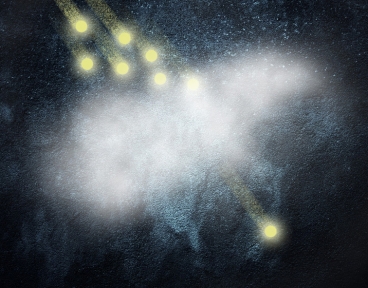Quantum computing is expected to supersede conventional computers in terms of speed and ability to process complex computations. However, the development of quantum devices for real-world applications is a major challenge.
 Artist representation of single-photon tranmission (Credit:Christine Daniloff)
Artist representation of single-photon tranmission (Credit:Christine Daniloff)
In an achievement that is deemed as a significant step towards developing quantum systems, researchers at MIT and Harvard University has identified a method to convert a laser beam in a controlled way into a stream of individual photons.
It is difficult to control photons as the interaction between photons is very weak. The method to enable these interactions is by employing atoms that interact with photons so that the interaction affects other photons. An illustration of this is allowing a photon to pass through a cloud of atoms after changing the state of the atoms so that a second photon is not allowed to pass through. Irrespective of the number of photons sent into the cloud, only one emerges out of it at any point of time. The cloud of atoms therefore acts as a single photon transmitter. The technique is based on the concept of electromagnetically induced transparency (EIT).
The team focused a laser beam through a dense cloud of rubidium atoms at 40 µK to produce the EIT state which makes the normally opaque cloud of atoms to be excited while letting photons pass through at slow speed. The atoms are in a state termed as Rydberg state and they do not allow a second photon to pass through if the first one is yet to emerge out of the cloud. The result is a temporary transparency when only one photon is present followed by opaqueness on the entry of more photons. The system could form the basis of a single photon switch and also quantum logic gates where one photon could switch another photon’s direction of travel.
Source: http://web.mit.edu